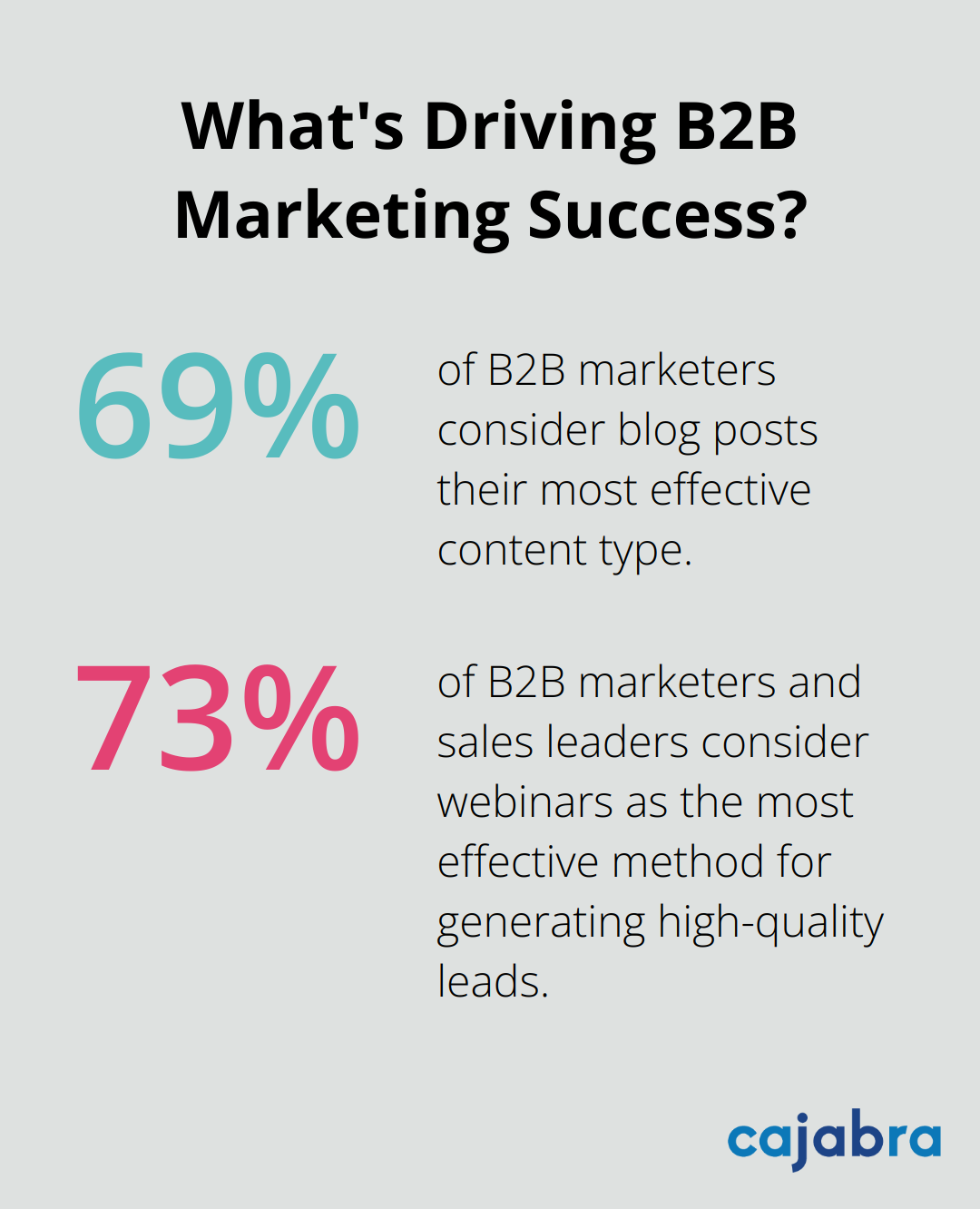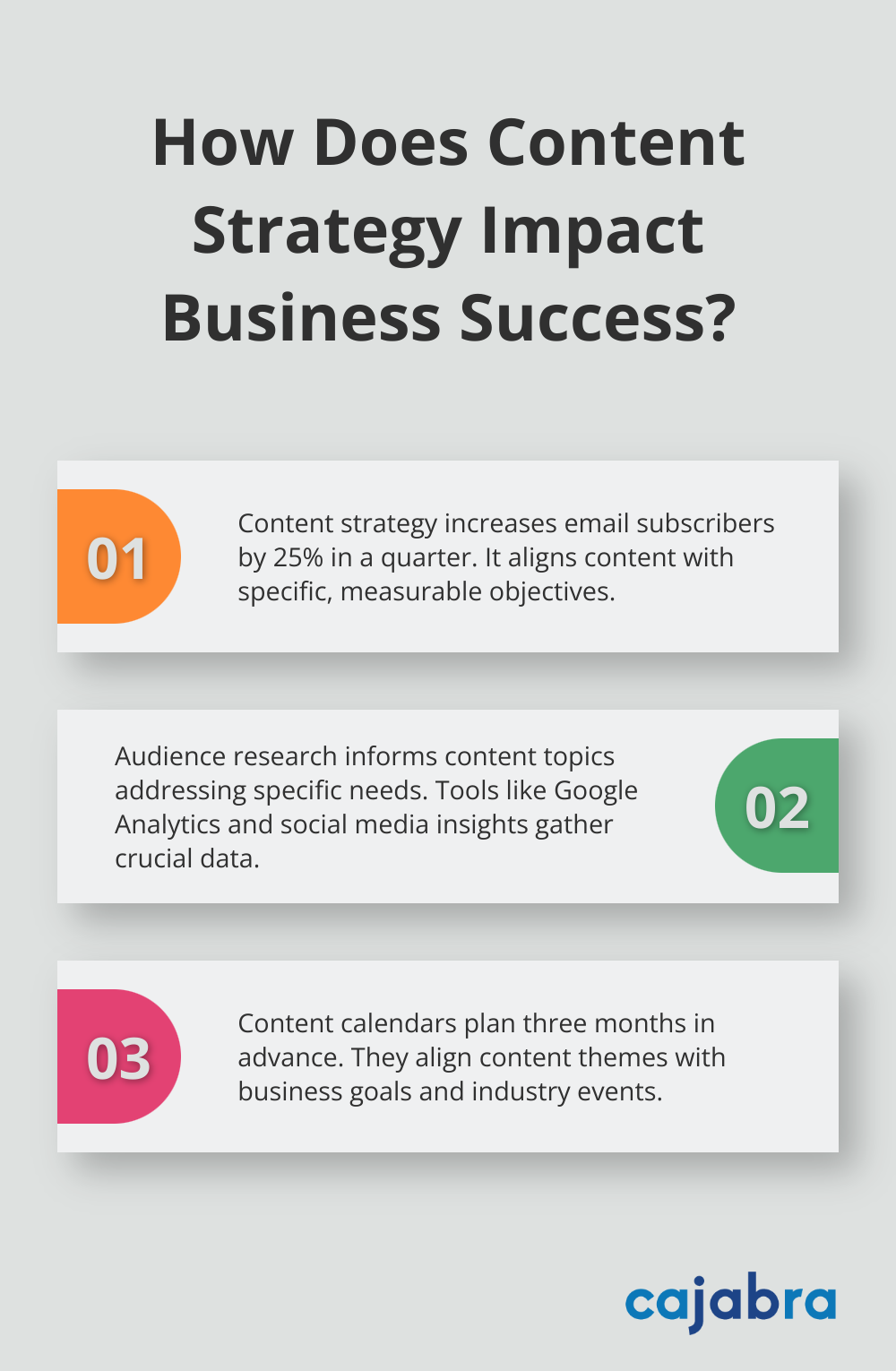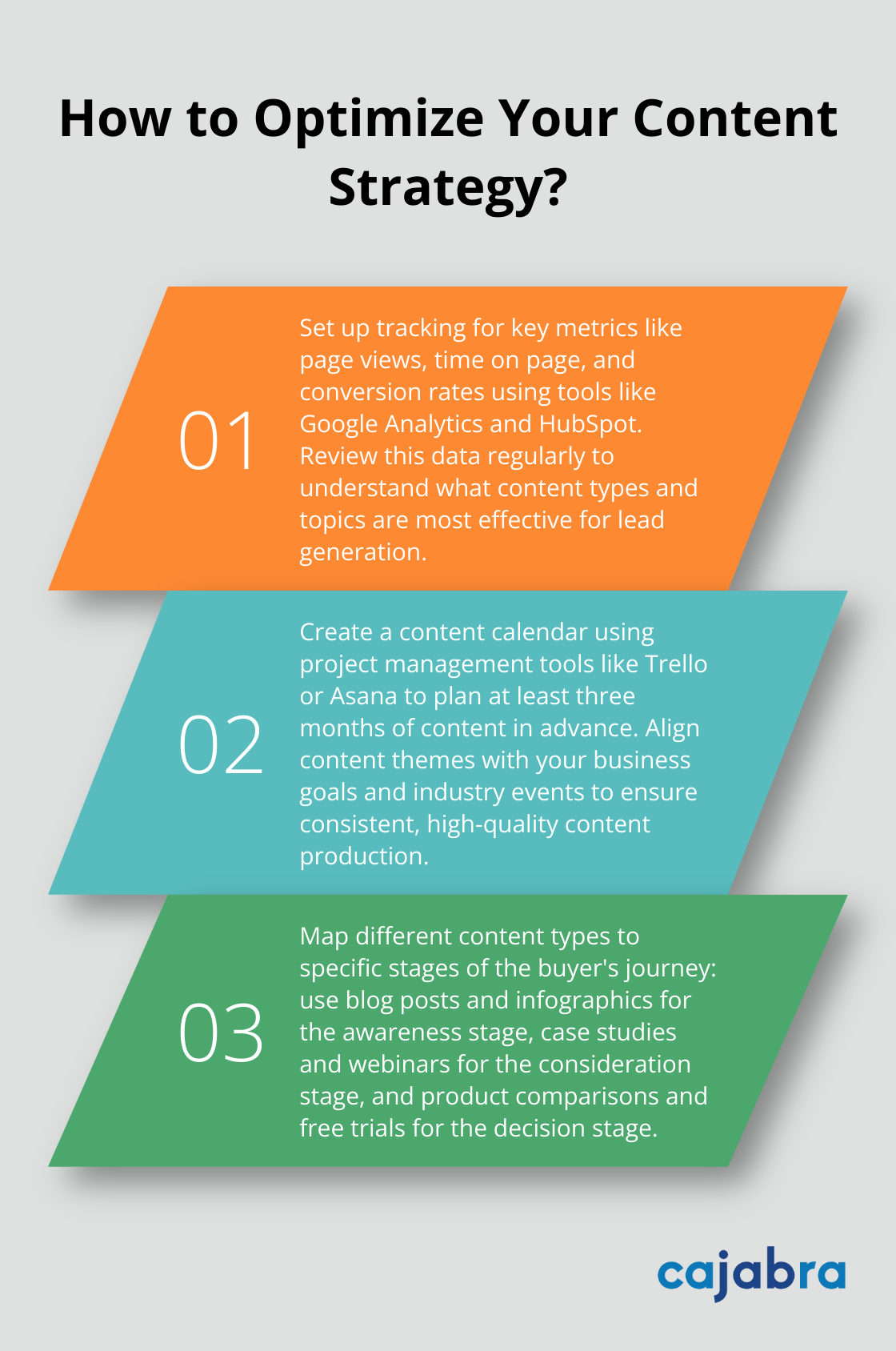
At Cajabra, LLC, we've seen firsthand how content marketing can transform lead generation efforts.
Content marketing for lead generation is a powerful strategy that attracts and nurtures potential customers through valuable, relevant content.
This approach not only builds trust and credibility but also positions your brand as an industry leader, ultimately driving more qualified leads to your business.
Content marketing is a strategic approach that creates and distributes valuable, relevant, and consistent content to attract and retain a clearly defined audience. It provides information that solves problems, answers questions, or entertains – all while subtly promoting a brand or services.
Content marketing attracts leads by offering value without demanding an immediate sale. This approach builds trust and establishes brand authority. An accounting firm might publish a series of articles on tax-saving strategies, attracting potential clients searching for this information.

After capturing a lead's attention, content marketing nurtures that relationship. A steady stream of helpful content keeps the brand top-of-mind and guides leads through the decision-making process. If you want to use your blog as an instrument to level up your SEO performance, you should consider publishing content regularly.
Different content types excel at various stages of the lead generation process:
Effective content marketing for lead generation requires understanding your digital audience. Thorough research identifies ideal customers' pain points, preferences, and online behaviors. This information creates content that speaks directly to their needs and interests.
Content marketing is not a one-size-fits-all solution. What works for one industry or audience may not work for another. Testing different content types and topics, and using analytics to refine the strategy over time, optimizes results.
The next chapter will explore how to create a content marketing strategy specifically designed for lead generation, building on the foundation of effective content types and audience understanding.
Start by identifying your primary goal. Choose a specific, measurable objective that will guide all your content decisions. For example, set a target like "Increase email subscribers by 25% in the next quarter." This clear objective will steer your content creation efforts.
Audience research forms the foundation of effective content strategy. Use tools like Google Analytics, social media insights, and customer surveys to gather data. Identify patterns in demographics, interests, and pain points. This insight will inform content topics that address your audience's specific needs (e.g., cash flow management for small business owners).
A content calendar serves as your roadmap to consistent, high-quality content production. We recommend using project management tools (such as Trello or Asana) to organize your content pipeline. Plan at least three months in advance, aligning content themes with your business goals and industry events.
Different content types work best at various stages of the buyer's journey:

A software company might create a blog post about common productivity challenges (awareness), follow up with a case study showing how their software solved these issues for a client (consideration), and offer a free trial (decision).
Set up tracking for key metrics like page views, time on page, and conversion rates. Tools like Google Analytics and HubSpot provide valuable insights. Review this data regularly to understand what works and what doesn't.
For instance, if you notice that your how-to guides consistently outperform news articles in terms of engagement and lead generation, consider shifting more resources to creating comprehensive, practical content.
A successful content strategy evolves based on data, audience feedback, and changing market conditions. The next chapter will explore how to use data analysis to better inform your content strategy and create content that appeals to your audience.
Start with website analytics. Google Analytics provides insights into your site's performance. Focus on metrics like number of users, sessions, average session duration, pages per session, and bounce rate. These indicators show how well your content attracts and retains audience attention.

A blog post on tax-saving strategies for small businesses with high page views and long average time on page likely resonates with your target audience. High bounce rates might signal a need to reassess your content's relevance or quality.
While traffic matters, generating leads is the ultimate goal. Track conversion rates for your lead magnets (e.g., eBook downloads or webinar sign-ups). Tools like HubSpot or Marketo help monitor these metrics and attribute leads to specific content pieces.
A healthy conversion rate for B2B content marketing typically ranges from 2% to 5%. If you fall short, consider adjusting your calls-to-action or refining your content to better align with your audience's needs.
Connect your content marketing efforts to actual revenue. Collaborate with your sales team to track which leads generated through content marketing become paying clients. This information proves ROI and refines your strategy.
You might discover that leads who engage with case studies are 50% more likely to become clients than those who only read blog posts. This insight can inform future content creation and distribution efforts.
Data analysis is an ongoing process. Review your metrics regularly to identify trends and opportunities. Use A/B testing to optimize your content titles, formats, and distribution channels.
Test different email subject lines for your newsletter to see which ones drive higher open rates. Experiment with publishing content at different times of day to maximize engagement.
The goal is to use data to make informed decisions that improve your content marketing strategy. Consistent measurement and adjustment based on these metrics will maximize the lead generation potential of your content marketing efforts.
Content marketing has proven its power as a lead generation tool. It attracts, engages, and converts potential customers by providing valuable, relevant content that establishes trust and showcases expertise. Successful implementation requires clear goals, audience understanding, and a well-planned content calendar that aligns with business objectives and audience preferences.

The future of content marketing for lead generation will likely involve emerging technologies and changing consumer behaviors. Personalization, video content, and interactive formats will gain prominence, offering engaging ways to capture and nurture leads. Voice search optimization may also become essential as more users adopt smart speakers and voice-activated devices.
At Cajabra, we help accounting firms use content marketing to attract high-value clients. Our JAB System™ and tailored marketing strategies can improve your firm's online presence and lead generation efforts. You can position your accounting practice as a trusted industry leader and secure retainer-based clients through valuable content creation and digital footprint optimization.



